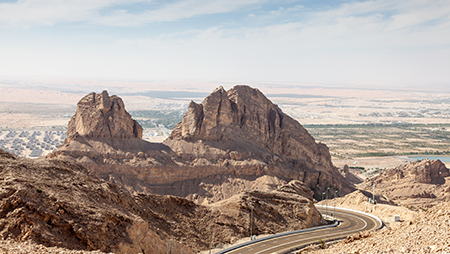January 2024
How do you prevent back pain while flying?
With 30 years in the business, chiropractor and clinic director Julian Keel knows everything there is to know when it comes to reducing back pain
A frequent flier who’s all too aware how long-haul travel can leave its mark on your joints, Keel spent four years as a chiropractor for Williams F1, where he travelled around the world treating the team. His Barnes Chiropractic Healthcare clinic treats all ages and stages – anything from headaches and neck problems to sciatica and sports-related injuries. He also has satellite clinics in Horsley and Walton-on-Thames.
So if you’re a frequent flier who’s worried about back pain, read on for Keel’s ultimate guide to negating aches at altitude…
Pre-flight checklist
“Incorporate exercise and healthy eating into your day-to-day routine as much as possible before flying,” advises Keel. Staying hydrated is also vital to prevention (make use of the many water bottle refill stations in Departures), as is managing travel-related stress, which can be helped by streamlining, planning ahead and giving yourself plenty of time.
In-flight exercises
As much movement as possible – especially if it’s a long flight – is the aim of the game here. As Keel puts it: “You need to try to keep the blood flowing.”
Chair running
“While sitting, raise your heels off the ground and move your legs back and forth, running on the spot,” Julian advises. “This will get your blood flowing. Then, stretch your legs out in front of you, pulling on the back of your hamstring and calf. Bend your toes towards you. To improve circulation further, bend yourself forward at the waist to take pressure away from your back and remove tension from your hamstrings.”
Calf raises
“In your seat, raise both heels off the grounds and squeeze your calf muscles,” says Julian. “Then, clench your glutes (the muscles around your bum) for a few seconds, release, and repeat. Your glutes are big players in lower back pain and by doing exercises as simple as these you can really release the pressure on your back. Repeat every hour.”
Hip rotation
“Rotate your hips clockwise and anticlockwise, shuffling in your seat. Then, lift one knee and circle, moving your hip, repeat. Tilt your pelvis forward and back four or five times for added relief,” suggests Julian.
Retract shoulder blades
“Bring your arms out in front of you, retracting your shoulder blades together and pushing your arms away as far as they can go,” Julian says. “Squeeze together and push several times, this is a good way to get movement into the upper back area.”
Rotate your neck
“Slowly shift your neck all the way one way and then the other,” says Julian, “then bring your ear down to your shoulder and the same the other way. Flex your neck forward, poking your chin in and out. This will successfully rotate all the different areas of the neck.”
Make use of loo breaks
“When possible, you want to be walking as much as you can,” advises Keel. “Once you’re standing, tip your head and then roll your body forward, bending at the hips. This will gently stretch your whole body.”
Post-flight hydration
As dehydration affects your spinal discs, Keel recommends drinking more water during and post-flight – and reducing caffeine and alcohol consumption, where possible.
This article has been tagged Wellbeing, Travel Tips
More from previous issues

Behind the wheel with Dom Joly
Former Sunday Times car columnist, funny man and travel writer Dom Joly on kerbside encounters and Europe’s road rage capital

Your favourite airport codes: revealed
Following last month’s airport code-busting, we asked you for your best-loved letters and why. Here are just some of your replies

Born on a 747: Shona’s story
“I’m going to have the baby now…” Meet the unexpected passenger whose mother went into labour in the sky 33 years ago…

Where to go in 2024: five new hotels worth driving for
Wondering where Avis car hire can take you next year? Wonder no more, as we map out five scene-stealing hotels at the end of the drive
